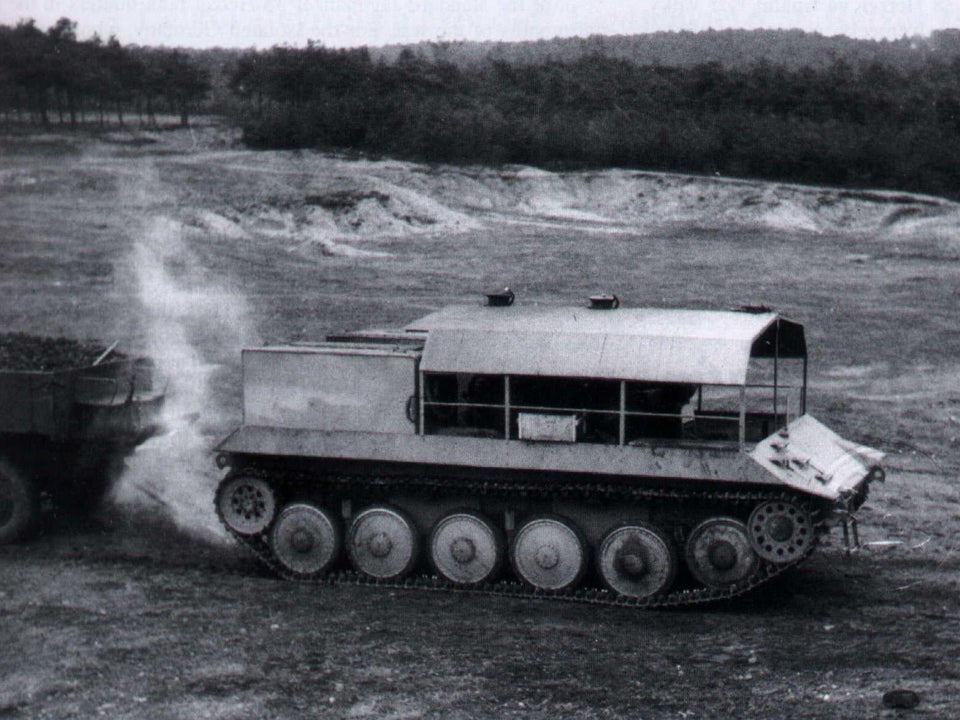Post by ukron on Mar 8, 2022 13:05:57 GMT
In 1944, Skoda-BMM began mass production of the Hetzer, this one based on the Panzer 38t allowed the Czech firm to harmonize its production and set up real production chains. Small problem: the war is going badly for the Axis and the resources are starting to run out, in particular at the level of fuel (synthetic fuel productions not allowing to fill the deficit), how then to supply a squadron of Panzers when the fuel comes? to be missed... well you take a base of a Panzer 38t and mount a steam engine on it!
That's about how Skoda-BMM developed its SK-13, modifying the base of a Panzer 38t in order to install a series of 70 horsepower steam engines (from a Skoda locomotive -Sentinel, developed in the 1930s, within an Anglo-Czech consortium); taking up a lot of things from the reinforced structure of the Hetzer, the SK-13 is seen adding a pair of additional wheels and armor (probably around 60mm) around the boiler as well as a relative protection for the crew (installed in a polygon-shaped cabin). In the center of the vehicle, two boilers with two chimneys. Based on a British invention, the boilers have a cylinder construction thus allowing a better diffusion of the water towards the piston on the one hand and on the other to accelerate or maneuver (this is the role of the mechanic). The SK-13 can therefore theoretically reach 30km/h for a total weight of 20tons and a carrying capacity of 5t.
Overhauled several times, a single copy was produced in 44 but turned out to be disappointing: the machine was far too slow (barely 15km/h max), could only carry 150km of autonomy in water and coal and was not absolutely not maneuverable. Back to the drawing board where two other concepts are developed: the SK-23, a troop transport and the SK-33, supposed to overcome the defects of the SK-13.
But we are at the end of 1944 and the Axis is almost beaten, with an increasingly sustained resistance in the Czech Republic and the growing threat of the Red Army, the SK-13 is quickly forgotten.

That's about how Skoda-BMM developed its SK-13, modifying the base of a Panzer 38t in order to install a series of 70 horsepower steam engines (from a Skoda locomotive -Sentinel, developed in the 1930s, within an Anglo-Czech consortium); taking up a lot of things from the reinforced structure of the Hetzer, the SK-13 is seen adding a pair of additional wheels and armor (probably around 60mm) around the boiler as well as a relative protection for the crew (installed in a polygon-shaped cabin). In the center of the vehicle, two boilers with two chimneys. Based on a British invention, the boilers have a cylinder construction thus allowing a better diffusion of the water towards the piston on the one hand and on the other to accelerate or maneuver (this is the role of the mechanic). The SK-13 can therefore theoretically reach 30km/h for a total weight of 20tons and a carrying capacity of 5t.
Overhauled several times, a single copy was produced in 44 but turned out to be disappointing: the machine was far too slow (barely 15km/h max), could only carry 150km of autonomy in water and coal and was not absolutely not maneuverable. Back to the drawing board where two other concepts are developed: the SK-23, a troop transport and the SK-33, supposed to overcome the defects of the SK-13.
But we are at the end of 1944 and the Axis is almost beaten, with an increasingly sustained resistance in the Czech Republic and the growing threat of the Red Army, the SK-13 is quickly forgotten.





